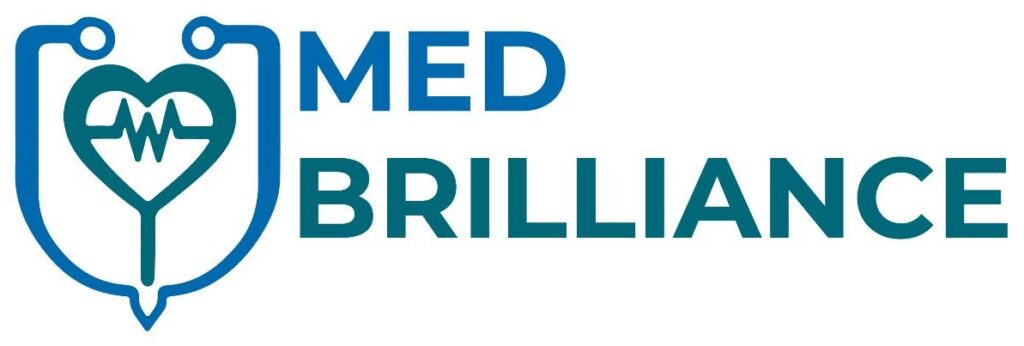Medical billing in the USA healthcare system requires accurate performance tracking. One important metric is the Pc ratio. This ratio helps providers measure efficiency, improve claim outcomes, and maintain better financial health. The complete understanding of the Pc ratio can help doctors, billing companies like MedBrilliance and healthcare managers optimize their revenue cycle.
What is the Pc Ratio in Medical Billing?
The Pc ratio in medical billing shows the relationship between payments collected (Pc) and the charges billed. It helps providers assess how effectively they are getting reimbursed for their services. A higher Pc ratio means billing is efficient and collections are strong.
Formula to Calculate the Pc Ratio
Example:
If a clinic billed $50,000 and collected $40,000, the PC ratio = (40,000 ÷ 50,000) × 100 = 80%.

Need Experts Help?
Get free consultation from our specialists and find the right solution.
Importance of Pc Ratio in the Medical Billing
This ratio is very important when checking the efficiency of the provider. Here are certain important things associated with Pc ratio in medical billing:
1. Measures Billing Efficiency
The Pc ratio measures how well providers convert charges into payments. This also gives a direct reflection of billing efficiency. A strong efficiency score reduces overhead costs. It also increases provider trust in their billing systems.
2. Highlights Collection Performance
It highlights whether the billing department or external billing service collects payments effectively from insurers and patients. A consistent performance shows that claims are processed without delays. It reassures providers that they are being paid fairly.
3. Identifies Revenue Leakages
A low Pc ratio signals revenue leakage due to denied claims, underpayments, or billing errors. Spotting these leakages helps prevent long-term revenue loss. It also directs managers to the exact area causing problems.
4. Helps in Contract Negotiations
Providers use the Pc ratio as a metric during payer contract negotiations to make sure that reimbursement is fair. It provides objective numbers that support negotiation points.
Insurers respond better when data-backed performance is presented.
5. Improves Cash Flow Planning
The ratio supports cash flow projections by showing expected income based on past collection performance. Stable ratios make it easier to plan payrolls and expenses. It also reduces the risk of financial shortfalls for practices.

6. Tracks Insurance Payer Performance
The providers identify which insurers reimburse quickly and which delay or deny claims by monitoring Pc ratio per payer. This insight helps doctors prioritize contracts with reliable payers. It also avoids wasted time with non-cooperative insurers.
7. Supports Compliance Checks
A constant Pc ratio helps providers confirm billing accuracy and compliance with U.S. healthcare regulations. The compliance reduces the risk of audits and penalties. It also keeps the provider’s reputation safe with payers.
8. Provides Benchmarking Data
Clinics use the Pc ratio to benchmark their financial health against industry averages and peers. Benchmarking shows whether the clinic’s billing is competitive. It helps managers set realistic goals for improvement.
9. Assists in Staff Performance Review
Billing teams can be evaluated by their contribution to achieving and improving the Pc ratio. The clear ratios make staff accountability more transparent. It motivates teams to maintain accuracy and speed in billing.
10. Drives Business Growth Decisions
A strong Pc ratio gives confidence to expand services, hire staff, or invest in technology. It provides financial proof that growth is sustainable. Doctors can expand without fearing sudden financial risks.

Medical Patient Billing Services – Their Specialties and Features
Visit our Medical Patient Billing Services page to learn more about our solutions.
Uses of Pc Ratio in Medical Billing
MedBrilliance shows that this ratio is of keen importance in the field of medical billing and influences its various aspects.
1. Monitoring Practice Health
Doctors use the Pc ratio to monitor financial performance and identify weak billing areas. This allows them to address small issues before they grow. It also builds long-term financial stability for practices.
2. Claim Denial Management
It helps detect patterns in denied claims and measure the effectiveness of denial management strategies. Trends reveal which codes or services face frequent issues. The providers can then fix errors at the source quickly.
3. Forecasting Revenues
The Pc ratio is a tool for projecting future revenues based on historical collection trends. Accurate forecasting ensures smooth budgeting for clinics. It also reduces surprises in monthly financial reports.
4. Payer Comparison
Healthcare practices compare ratios across payers to spot reliable insurance partners. It exposes payers with low reimbursement patterns. Doctors can use this information to adjust their contracts.
5. Budget Allocation
Finance teams rely on the PC ratio when making budget allocation decisions for operations and staffing. Reliable ratios reduce risks in payroll planning. It makes sure that funds are allocated where most needed.

6. Identifying Training Needs
If the ratio is low then it signals that billing staff may need additional training in medical coding or claim handling. Targeted training improves claim acceptance rates. It also boosts team confidence in handling complex cases.
7. Outsourcing Decisions
Providers use Pc ratio trends to decide whether to outsource billing to a medical billing company. The low ratios show when in-house systems are failing. External billing partners often bring faster improvements.
8. Auditing and Reporting
The ratio is included in financial audits and monthly revenue cycle management reports. Auditors rely on it as a key performance metric. This helps create a transparent record for stakeholders.
9. Evaluating Technology Systems
It helps assess whether the billing software or EHR is supporting efficient claim submission. Poor ratios may signal outdated systems. Upgrading technology often leads to immediate improvements.
10. Improving Patient Payment Strategies
The ratio can show if patient collection methods are effective. Strong ratios prove patient-friendly systems are working while the weak ones highlight the need for better payment options.

Best Practices to Optimize a Provider’s Pc Ratio
Here are some best and practical things by MedBrilliance to optimize the Pc ratio of your provider:
- Submit clean claims on first attempt.
- Verify patient insurance eligibility before services.
- Use accurate medical coding and documentation.
- Follow up on denied or underpaid claims quickly.
- Automate billing processes with reliable software.
- Train staff regularly on payer rules and updates.
- Monitor payer-specific Pc ratios monthly.
- Communicate payment policies clearly to patients.
- Use electronic remittance advice (ERA) for accuracy.
- Partner with a professional medical billing company.
Check out our latest research on medical billing, visit our medical coding services page .
We strictly follow all standard medical billing protocols and you can learn more about medical billing services through Wikipedia.

